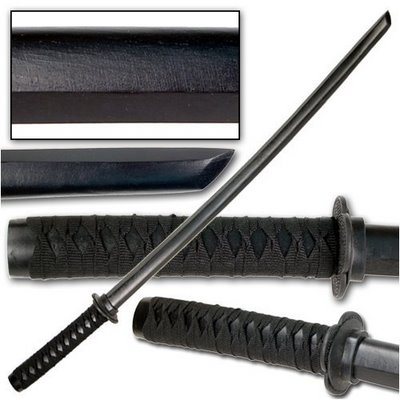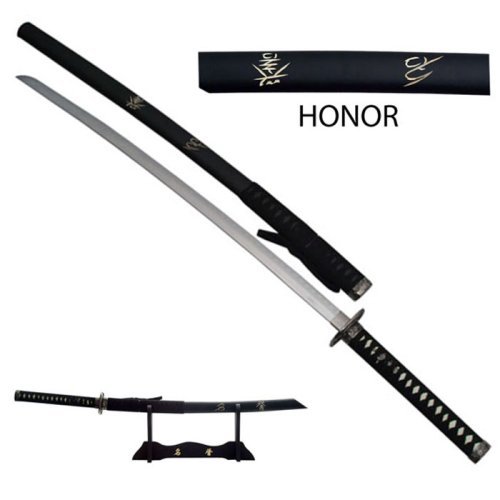Start Your Training With A Daito Wood Practice Sword

The wrap on the handle is a nice Touch; My Guard doesn't really fit that good, but will stay in place (it just jiggles a little when I swing). Also the fact that they have weight to them helps increase the muscles in your wrist and arms. I have hit them together accidentally and they seem to hold up to the blow.
Overall, it was pretty good, I was a little disappointed in the quality of this sword. There were several cracks in the finish of the sword. Nothing huge, just minor eyesores.
A great bokken at a good price. I do both Ninjutsu and Toyamma Ryu, a katana martial art new to the U.S. that is a combination of Iaido and kenjutsu with a strong emphasis on iaido(drawing and sheathing of the sword) and on the perfection of the cut. It is heavier than most bokken, which I think is a good thing because its closer to the weight of a real katana, and it builds strength in the forearms while practicing. For Toyamma Ryu I use mostly my carbon steel Iaito(unsharpened katana) but still use it when we do kenjutsu techniques like blocking drills bokken to bokken. It doesn't come with a saya(sheath), but I just made one out of thick black plastic from my water well tubing and heated to mold it into more of an oval instead of being circular. I needed a saya, because it is important for drawing in Iaido techniques. For most bokkens you can use those old plastic black golf club tubes that they sell at Dick's Sporting Goods or wherever you can find them, but you have to ask for them. The handle-wrap is durable and a really nice feature. In Ninjutsu all we use is the bokken because we do body movement to avoid the blade which is obv much safer than a metal sword. I've wacked it pretty hard in practice and by accident a few times and it has held up really well and the handle-wrap hasn't moved at all, so I think it is a really nice practice tool that everyone will love.
It's still a fairly cheap piece of wood, compared to an ironwood version, but at this price (it was $9.99 when I bought it) you really can't go wrong. A nice enhancement over the basic bokken. I do, however, prefer the natural wood version to this one as it looks pretty bad once you start using it and the color scrapes off. Nevertheless, if you want an inexpensive practice sword this one is recommended.

